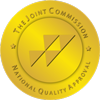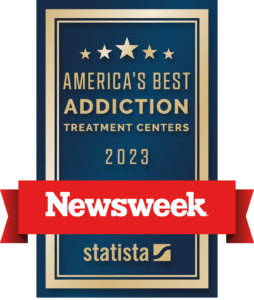Addiction treatment programs are both inpatient or outpatient. For many people, inpatient treatment is not an option. So, IOP (intensive outpatient program) or PHP (partial hospitalization program) is their next option.
But, what is the definition of outpatient rehab? What is an IOP vs. PHP? And, how do you choose which program is best? At Sana Lake, we help you choose an individualized program that offers the best chance at recovery.
What is the Outpatient Treatment Definition?
An outpatient rehab program allows members to attend treatment while living at home. For members who can’t leave work or have families to care for, PHPs and IOPs work around their schedules.
Outpatient treatment is beneficial for those with:
- A mild to moderate substance use disorder
- Little to no risk of serious withdrawal complications
- A strong support system
- High motivation for lasting recovery
- Transportation to and from treatment
What is PHP?
PHP stands for Partial Hospitalization Program. It is the most intense outpatient substance use disorder treatment program. However, it is less intense than inpatient treatment.
Members in PHP attend more therapy and group sessions each week than those in IOP. The time commitment in IOP is comparable to inpatient treatment. Generally, the only difference between PHP and inpatient treatment is members live where they want in PHP.
Is PHP Best for You?
PHP is a good treatment program for those who:
- Completed inpatient treatment but still runs a high risk of relapse
- Has relapsed multiple times and struggles to manage cravings
- Still coping with withdrawals and undergoing detox
How Does Treatment Work: PHP vs. IOP
Members in PHP vs. IOP spend more time in psychotherapy and group sessions. For example, members in PHP may spend up to 8 hours a day in treatment. The length of each session highly depends on the needs of the member.
To meet each member’s needs, holistic therapies are often added to psychiatric and medical treatments. Holistic therapies are beneficial as members in PHP may still be vulnerable. And holistic therapies bring relaxation, calm, and balance to life in recovery.
What is IOP?
IOP is short for the Intensive Outpatient Program. It’s the next step-down in a comprehensive treatment plan. IOPs require less time in therapy and group sessions, allowing members to have a more normal life.
Although members may only attend treatment a few hours a week, they are encouraged to participate in 12-step programs. Returning to work and the normal routine of life can also bring back the triggers for drug or alcohol misuse. IOPs allow members to seek support from peers and therapists while building confidence in real-life situations.
Who Benefits From IOP?
As members work through the recovery process, they often want the freedom of working and raising their children. While an IOP offers that ability, it is not always the best choice.
Members should always be realistic about how much freedom they can handle. With more freedom comes more triggers and cravings. And, while a member may be eager to finish treatment, they need to be confident in their recovery.
IOP is not beneficial if:
- Returning to your everyday environment will trigger cravings
- You will be around people who encourage drug and alcohol use
- Lack of transportation to meetings and therapy sessions
IOP vs. PHP: How Does Treatment Work
Members in IOP vs. PHP typically go to treatment three days a week for 3 to 4 hours each time. However, treatment sessions are based on the needs of the member. For example, if a member struggles with cravings, they may add more sessions to their therapy. But, as they improve, sessions will become fewer.
Besides psychotherapy, group sessions in IOP can help those new to recovery learn from those who have been there. Group therapy also helps members feel less lonely and isolated as lasting bonds are made.
What are the Similarities of PHP vs. IOP?
PHP and IOP are similar in that members receive treatment during the day and live at home in the evening. Treatments and therapies in IOP vs. PHP are also similar. But, IOP focuses more on relapse prevention.
Whether you choose PHP or IOP, you will receive individualized personal care that puts you on the path to lasting recovery.
How To Choose Between IOP vs. PHP
Choosing the right addiction treatment program can be confusing. In fact, some people may not know the difference between inpatient and outpatient treatment. So, how do people choose between IOP vs. PHP?
For help in deciding the best choice for treatment, it is best to consider the following.
Time Commitment
The recovery process is time-consuming. However, your recovery and overall wellbeing are worth all the time it takes to heal. If you want the shortest treatment program, then inpatient is the way to go. These programs typically last 30 days.
Some outpatient programs such as PHP and IOP may last 90 or even 200 days. The length of time spent in any treatment program greatly depends on the member and their substance use disorder.
Insurance and Finances
Finances are one of the biggest obstacles in addiction treatment. However, insurance is required by law to cover mental and behavioral health services. For members without insurance, there are options.
If you qualify, Medicare and Medicaid will help cover the cost of treatment. Besides insurance, some centers may offer payment plans or grants. And, crowdfunding is another way to cover the cost of recovery.
Lifestyle
Another important factor in choosing an addiction program is your lifestyle. Lifestyle factors include your diagnosis, your career, school, and your responsibilities to your family. These factors often determine whether inpatient or outpatient treatment is best. And, if it’s outpatient, then do you choose PHP or IOP.
The Pros and Cons of PHP and IOP
Like all decisions in life, there are pros and cons when choosing IOP vs. PHP. Determining which treatment program is right for you can be the difference in recovery or relapse. The following may help you decide between PHP vs. IOP.
Pros include:
- Individual and group therapy
- Life skills training
- Family therapy
- Mindfulness and meditation
- Lower cost than inpatient treatment
- Flexible hours
Cons include:
- Access to drugs and alcohol
- Facing real-life triggers
- Needing transportation to treatment
- Lack of supervision
If you are still unsure whether to choose PHP or IOP, talk to your doctor or call us at Sana Lake, and we will gladly answer any questions you have.
Can PHP and IOP Treat Co-Occurring Disorders?
Co-occurring disorders happen when a person struggles with drug or alcohol use disorder and a mental or behavioral disorder. This is also commonly called a dual diagnosis.
It is so common that according to the National Survey on Drug Use and Health (NSDUH), 45 percent of Americans suffer from a dual diagnosis. Furthermore, people with a mental health disorder are twice as likely to struggle with substance use disorder.
While some co-occurring disorders which are being managed can be treated in IOP or PHP, inpatient treatment is better suited to treat a dual diagnosis. This is because co-occurring disorders need simultaneous treatment to reduce the risk of relapse.
Why is Outpatient Treatment Better Than Inpatient Treatment for Some People?
When deciding which addiction treatment to choose, it is common to ask people their opinion if they have been in treatment before. But, it is important to remember, addiction is a personal issue, and so is treatment. So what works for one person may not be best for you.
But, other than a few exceptions, such as a severe addiction and multiple relapses, PHPs and IOPs are often the best programs for recovery. In fact, those who attend inpatient treatment eventually go to outpatient treatment.
Outpatient treatment is preferred over inpatient treatment for various reasons, including:
- It is less disruptive to life than inpatient treatment. Members can still work, go to school, and care for their families.
- It allows members to immediately use what they learn in treatment in their daily lives.
- It offers more flexibility and freedom than inpatient treatment.
- It allows for privacy in treatment. Since members can work and participate in everyday life, they don’t have to tell their boss or friends and family.
- Outpatient programs are far less expensive than inpatient treatment. As a result, members have less of a financial burden.
Quick Facts on Substance Use Disorder
According to NSDUH, in 2017, the facts on addiction include:
- 19.7 million Americans ages 12 and over struggle with substance use disorder
- 74% of adults with an addiction misuse alcohol
- 38% of adults misuse illicit drugs
- 1 out of 8 struggle with both drug and alcohol use disorder simultaneously
- 8.5 million adults struggle with co-occurring disorders
Outpatient Treatment Programs at Sana Lake Recovery
As the numbers above show, you are not alone in your struggle with addiction. And like you, they are also lost on whether to choose PHP or IOP for their treatment. At Sana Lake, we have helped thousands of people like you achieve lasting recovery.
Are you or a loved one struggling with addiction and don’t know where to turn? Contact us today. We are waiting to help you achieve lifelong recovery.
References:
https://www.samhsa.gov/data/sites/default/files/nsduh-ppt-09-2018.pdf



